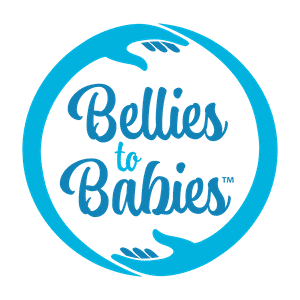Choosing the Best Way to Feed Your Baby: Important Considerations for New Parents
How you are going to feed your baby may be something you've already decided on or maybe you're going to see how things go and see what works for you guys as a new family. You’ll have lots to think about and want answers to many questions when you’re pregnant and feeding you baby is probably one of them. You can choose from several ways, depending on what best suits or works well for you all.
What are your feeding options?
Babies need milk that contains certain qualities to grow and thrive. They can’t digest any other form of nutrition until they’re around 6 months old. It’s recommended that you feed your baby breastmilk — called exclusive breastfeeding — for the first 6 months. After that, you can introduce solid foods while you continue breastfeeding.
If you don’t plan to breastfeed or you decide on an alternative method, we have multiple options these days. You can give your baby expressed breast milk (EBM), infant formula or a combination of EBM and formula, which is known as mixed feeding. More about these options are below.
Babies who are premature, unwell or receive care in SCBU or NICU may also be fed human donor milk - with your consent of course!
When is the right time to consider how I will feed my baby?
There is no right time to decide how you will feed your baby, although you may have a clear preference before your baby is born, thoughts, experiences, stressors or previous trauma may impact your decisions.
How you will feed your baby is largely influenced by social attitudes towards breastfeeding, and your knowledge about the importance of breastfeeding for your own, and your child’s health.
Some might regard breastfeeding as an attribute of being a ‘good’ mother. You might experience pressure to breastfeed, and then feel distressed, shame, or anger if breastfeeding doesn’t work out as you planned.
There are a number of alternative options for feeding your baby.
Bottle feeding - you might choose to bottle-feed with expressed breastmilk or infant formula.
Either way, it’s important to know how to clean and sterilise the bottles and all the equipment and how to prepare, store and warm bottles of formula. This will help to keep your baby safe from infection and tummy upsets. If you are using formula, a dairy-based infant formula (made from cow’s, goat’s or sheep milk) is the best choice for most babies. Research suggests that no particular infant formula offers benefits over any other. Before buying a commercial infant formula, check the label for the appropriate age group to be fed to and the use-by date. Infant formula that is past its use-by date is not safe to feed your baby. Infant formula must be prepared and stored carefully to minimise the growth of any bacteria that could harm your baby. Carefully follow the instructions on the formula tin.
Cup feeding -providing breastmilk to your baby with a small medicine cup or similar device — is usually a temporary alternative to breast or bottle feeding. While the idea of feeding your baby using a cup may sound tedious or daunting, it’s actually a simple option. Cup feeding requires very few pieces of equipment — items that can be more easily cleaned and sterilised than bottles.
Finger feeding - this involves your baby receiving breast milk or formula via a very fine feeding tube while they suck your finger. When your baby sucks on the finger and tube with their tongue in the right position, and with their lips making a seal on the finger, milk is drawn up a fine feeding tube from a container of milk. Sometimes a curved tip syringe is used to drip milk into a baby’s mouth alongside the finger instead of a tube. Finger feeding a baby can be an alternative to using a bottle or cup if a baby isn’t breastfeeding yet and it can also be used as a suck training technique.
Supplemental nursing system (SNS) - If breastfeeding isn’t going as well as you hoped it would, you may be told to consider using a feeding tube while you breastfeed your baby. This system allows you to supplement your baby at the breast with breast milk or formula. One end of a very thin, flexible tube is placed in a container, such as a bottle, that contains the milk. The other end is either inserted into the baby’s mouth after they have latched on to your breast, or is attached to your breast with medical tape ahead of time so it’s ready to go. The result is that your baby may get some breastmilk from your breast as well as supplemental milk.
Top tips for deciding how to feed your baby
Speak with your LMC about what's right for you. Try not to make any firm decisions until after your baby is born
Understand that breastfeeding is a skill that every mother and baby can learn, and it can take time to build confidence and to get to know each other
Only you know what’s right for you and your baby. If you give your baby the nutrition they need, you don’t need to justify which option you choose
Be patient with yourself and your baby as you both learn what's involved in feeding
Remember, what’s important is that your baby is content and gets the nutrition they need to grow and thrive
Chat with a breastfeeding counselor or Lactation Consultant about your options
Medical disclaimer: This page is for educational and informational purposes only and may not be construed as medical advice. The information is not intended to replace medical advice offered by physicians, osteopath, midwife, obstetrician, chiropractor or other qualified health care provider.

